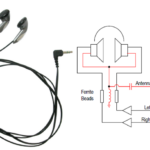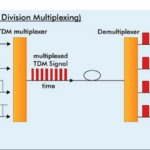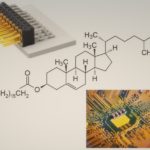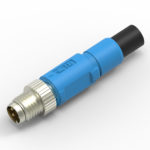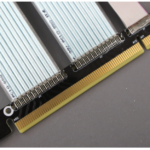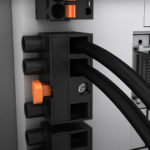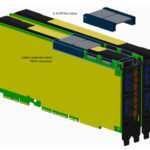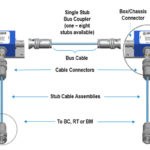Using one wire in two very different roles is widely done, requiring some simple circuity and basic components. Using a headphone wire as an FM antenna The earliest portable AM/FM portable radios used two antennas: an internal long wire wound on a ferrite core for the lower-frequency AM band (550-1600 kHz), and a “whip” antenna […]
Basics
Simple double-duty: How to get one wire to do more, Part 1: The rationale
Using one wire in two very different roles is widely done, requiring some simple circuity and basic components. It makes a lot of sense to use an individual single copper cable and its connection between two points to do more than it initially intended, especially if that additional function is aligned with the primary function […]
How accelerator IO interface connectors and cables offer more options
Accelerator I/O connectors and cables provide secure, electrical contact and transmission for high-speed data. These devices typically make up one of the largest unit percentages of data-center equipment in terms of use and assembly. This is particularly true compared to top-of-rack (TOR) switching fabric network interface cables, such as Ethernet or InfiniBand. TOR switching is […]
Liquid crystal polymers get an upgrade for high-speed signals
RF and high-speed digital signals have brought on the development of new liquid crystal polymer materials used in connectors, PCBs, and other interconnects. Liquid crystal polymers (LCPs) are experiencing a surge in demand resulting from high-speed communications technologies, particularly fine-pitch components such as high-frequency connectors, board-to-board connectors, and low-pass insulation supporters, or dipoles on active […]
Single Pair Ethernet (SPE) allows an interconnected industry
By Ruud van den Brink • Product Manager for Industrial Communications • TE Connectivity Industry 4.0 is all about enhancing efficiency and productivity. Part of these improvements can be realized in a more optimized communication infrastructure in industrial networks. Modern-day industrial automation systems are complex. Different layers in the network use different communication standards. A […]
How PCIe interface developments have changed and advanced
By Ed Cady, contributing editor Peripheral component interconnect express, or PCIe, has become the interface standard for connecting high-speed components, such as graphics, memory, and storage. Typically, PCIe interface signaling and physical layer implementation rely on printed circuit board assembly (PCBAs) and edge connectors. Several standardized and non-standardized cabling solutions are available that support a […]
Connectivity building blocks for motion control
Servo and variable frequency drive designs depend on compact and reliable electrical connections. Matt Hou • Sales Engineer • Dinkle International Today’s machinery and equipment — whether built for the consumer, commercial, or industrial markets — are increasingly relying on servo and variable frequency drive (VFD) devices to provide intelligent, efficient, and precise motor control. […]
How cable technology is evolving to meet high-performance networking
Persistent memory has become one key technology for the cloud as speed, efficiency, and volume at data centers advance. In high-performance computing, the cloud often requires data to be moved between multiple physical systems. Data may also be replicated for redundancy and protection, or it can be split across physical systems for performance. High-performance networking […]
Understanding the MIL-STD-1553B bus
by Duane Teachout, Product Manager, Cinch Connectivity Solutions Despite being over 50 years old, the MIL-STD-1553B bus is still widely used, which is probably because it is really good at its job. If you’re new to the standard, read on to learn more about its features, the terminology used and how to get the most […]
Single-Pair Ethernet addresses industrial priorities, Part 1: The IEEE 802.3cg standard
For applications driven by sensors more than high-speed data, the IEEE 802.3cg standard offers single-pair Ethernet connectivity with far lower cable costs and bulk. Ethernet has come a very long way in adoption and speed from its humble inception driven in the early years by a team led by Robert Metcalfe at the Xerox Palo […]

